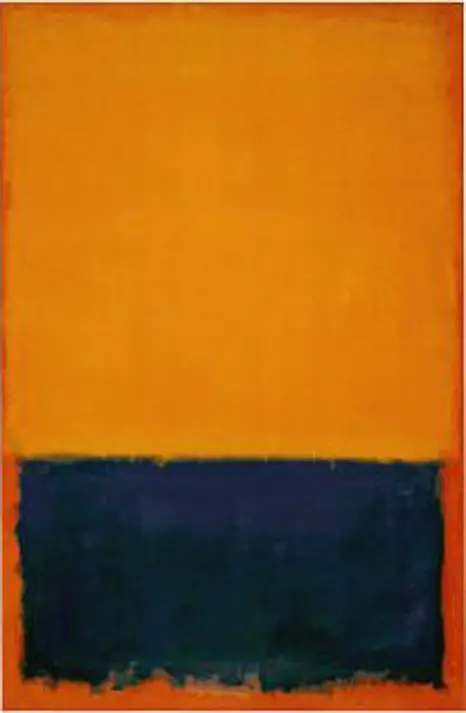Yellow Blue Orange, 1955
Mark Rothko, an artist born in Russia, brought abstract expressionism into the world of art, a modern type of abstractionism. Yellow, Blue, Orange, 1955, is an oil on canvas painting. This abstract piece of art represents intriguing emotions and concepts evoked by colour and strokes of the brush.
The Illustration Represented in This Art Piece
The architecture of Rothko's design was intended to envelop the tourists in his artwork, with vivid bands of horizontal colours applied on a huge canvas. Ambiguously named to allow each viewer to create their impressions, he used the darkest shades of the palette at the bottom to signify the mental depression he experienced.
The Technique Used on Yellow, Blue, Orange
This intriguing piece of artistic creation utilises only three colours from the palette, yellow, blue, and orange, as is signified by its title. The oil on canvas painting has the ability to represent a wide variety of emotions determined by the viewer. It can represent life by the bright colours of yellow and orange at the top of the painting. On the contrary, it can represent a dark side of life based on the deep hue of blue used. This is an exceptionally engaging thought considering the artist died at the age of sixty-six as a result of suicide.
The Meaning Behind the Painting
Rothko displays an interpretation of architectural design with a delicate mix of colours. He uses acrylic resins and oil-modified alkyd for most of his paintings combined with other unique traditional materials such as dammar resin and glue. The creation gives off a sense of space or a place that one can enter and take a profound spiritual journey. This painting, in a way, depicts a deep state of thought, almost like the artist is calling out for attention to the colours in use and whatever each one may symbolize in the real world. The artists' Latvian Jewish lineage may be a determiner to the message he is relaying by depicting rectangular-shaped colour regions applied irregularly on the canvas.
External Influences
Rothko's art pieces took a turn after the Second World War and transitioned in the 1940s. They reflected experimental play with colour, surrealism, and mythological themes. Most of his paintings after that, until his time of death, were similar to this one, the Yellow, Blue, Orange Piece.
In Summary
Rothko's masterful play with colour strongly spoke in a personal, intense message without themes, conveying that a good painting ought to have a profound sense rooted in spirituality and mortality concepts.

